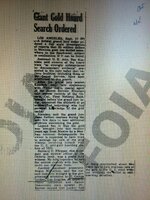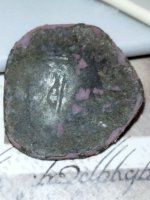clv
Hero Member
- Dec 23, 2012
- 714
- 1,101
- Detector(s) used
-
Current Detectors; Minelab Safari, Equinox 600
TRX Pin Pointer, Fisher 1235x
Have owned; Minelab Eureka gold,
Tesoro Compadre, White's MX5, GMT, MXT Pro,
fisher cz7a pro, go fine 20, Garret Ma
- Primary Interest:
- All Treasure Hunting
I have been looking at this topic for a time. If the treasure is there it can be found. In the 1980's we were building satellites that could see (digital photography) mineral deposits, gold, silver, copper, and oil.
Using a camera equipped drone with the proper filters should put you in the right spot, then get out the two box deep seeking detector to pinpoint it.
Then all your going to need is a backhoe, a truck and a strong back.
Using a camera equipped drone with the proper filters should put you in the right spot, then get out the two box deep seeking detector to pinpoint it.
Then all your going to need is a backhoe, a truck and a strong back.








